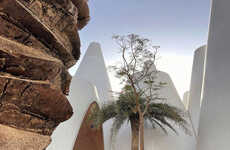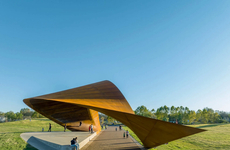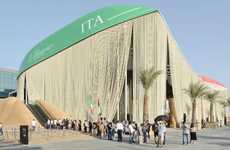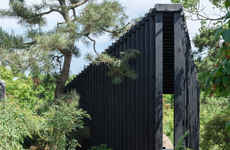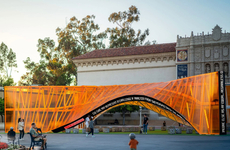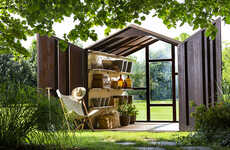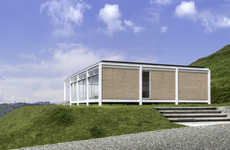
Dina Haddadub & Rasem Kamal Work on a Shelter for the Desert
Kalin Ned — May 11, 2018 — Art & Design
References: dinahaddadin & dezeen
This pointed Corten steel pavilion is designed by architects Dina Haddadin and Rasem Kamal to provide relief in the Jordanian desert. As crossing the landscape can prove to be an extremely difficult activity that may result in heat exhaustion, the creatives develop a nomad-inspired structure, stressing the use of low-maintenance pipes and woven goat hair.
The oasis-like Corten steel pavilion is "informed by the architecture of indigenous Bedouin's tents and the structure of Jordan's national flower, the black iris." Dina Haddadin and Rasem Kamal create the structure to provide shelter from the sun and warmth for the winter months, all the while being a functional water-collecting system. The liquid will be gathered by a fabric-made cone structure that will draw fresh drinking water from the occasional rain and fog.
The oasis-like Corten steel pavilion is "informed by the architecture of indigenous Bedouin's tents and the structure of Jordan's national flower, the black iris." Dina Haddadin and Rasem Kamal create the structure to provide shelter from the sun and warmth for the winter months, all the while being a functional water-collecting system. The liquid will be gathered by a fabric-made cone structure that will draw fresh drinking water from the occasional rain and fog.
Trend Themes
1. Sustainable Architecture - The use of low-maintenance materials and water-collecting systems in the Corten steel pavilion presents opportunities for sustainable architecture innovation.
2. Nomad-inspired Design - The design of the pavilion, inspired by indigenous Bedouin's tents, opens up possibilities for creating mobile and adaptable structures for various environments.
3. Climate-responsive Structures - The pavilion's water-collecting system that utilizes rain and fog offers opportunities for designing structures that can respond to changing climate conditions.
Industry Implications
1. Architecture - The sustainable and climate-responsive features of the pavilion indicate potential for innovation in the architectural industry.
2. Construction - The use of low-maintenance materials and unique design elements in the pavilion suggests disruptive opportunities in the construction industry.
3. Outdoor Recreation - The nomad-inspired and functional design of the pavilion can inspire the development of innovative outdoor recreational structures and accommodations.
3.4
Score
Popularity
Activity
Freshness


